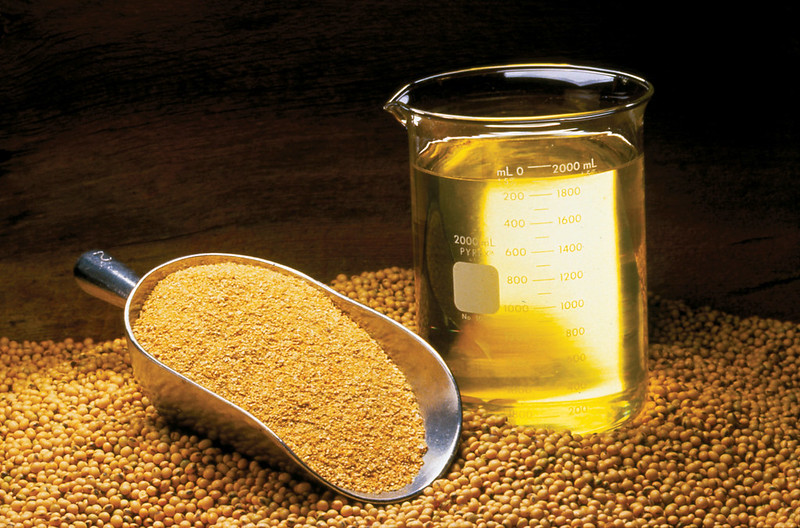SOYA BEANS CRUSHING
Spread trading, which involves simultaneously buying and selling two different contracts, is a widespread strategy in the grain and oilseed markets. One of the most common spread trades in the soybean market is the crush spread.
Soybeans are processed into soybean meal and soybean oil through a process known as crushing. The crush spread is the difference between the value of soybeans and its byproducts, and is considered a gauge of the potential profit margin for soybean processors.
We will look at the Soybean crush using Soybean, Soybean Oil and Soybean Meal futures, including the various alternatives for executing the crush.
Soybean Crushing
Nearly 2 billion bushels of soybeans are crushed every year. During the crush process, soybeans are cracked to remove the hull and then rolled into flakes, which are then soaked in a solvent and put through a distilling process to produce pure crude soybean oil.
After the oil has been extracted, the soybean flakes are dried, toasted and ground into soybean meal.
The availability of Soybean, Soybean Meal and Soybean Oil futures allows processors to protect themselves against rising soybean prices and the possibility of declining prices for processed oil and meal.

In a crush spread, the trader takes a long position in Soybean futures against short positions in Soybean Meal and Soybean Oil futures. This is also known as the board crush. The value of the crush equals the Soybean Oil futures price plus the Soybean Meal futures price, minus the price of Soybean futures.
Soybeans, soybean meal and soybean oil all trade in different units:
- Soybeans trade in bushels
- Soybean Meal trades in tons
- Soybean Oil trades in pounds
So in order to perform an accurate calculation, the prices of the three commodities need to be converted to a common unit.
A bushel of soybeans weighs approximately 60 pounds; since Soybean futures are priced per bushel, we can alternatively think of the Soybean futures price as the price per 60 pounds of soybeans. Then, a conversion factor is applied to the futures prices of Soybean Meal and Soybean Oil.
A bushel of soybeans produces about 44 pounds of soybean meal. Since Soybean Meal futures are priced per ton, multiplying the meal price by 0.022 represents the meal price per 44 pounds. That same bushel of soybeans also produces 11 pounds of soybean oil. Since Soybean Oil futures are priced per pound, multiplying the soybean oil price by 0.11 represents the oil price per 11 pounds.
The crush can be either sold or bought, which refers to the action taken with the Soybean Oil and Meal futures legs. Selling the crush means selling Soybean Oil and Soybean Meal, and buying Soybeans. This is the trade typically used by hedgers.
Buying the crush, which is also known as the reverse crush, means buying Soybean Meal and Soybean Oil, and selling Soybeans. This may be used by traders who anticipate movements in the market that could make this strategy advantageous.
One of the benefits of trading the crush at CME Group is that rather than legging into the spread, which means that each individual component of the crush must be traded separately, the Soybean crush can be executed on CME Globex as a single trade.
At every stage of the soybean production chain, from planting and harvest, to exporting and processing, each market participant faces the risk of adverse price movements caused by the vagaries of the market and supply and demand.
Futures and options on Soybeans, Soybean Meal and Soybean Oil— as well the Soybean crush–provide a means to manage this risk as well as to take advantage of potential profit opportunities.
